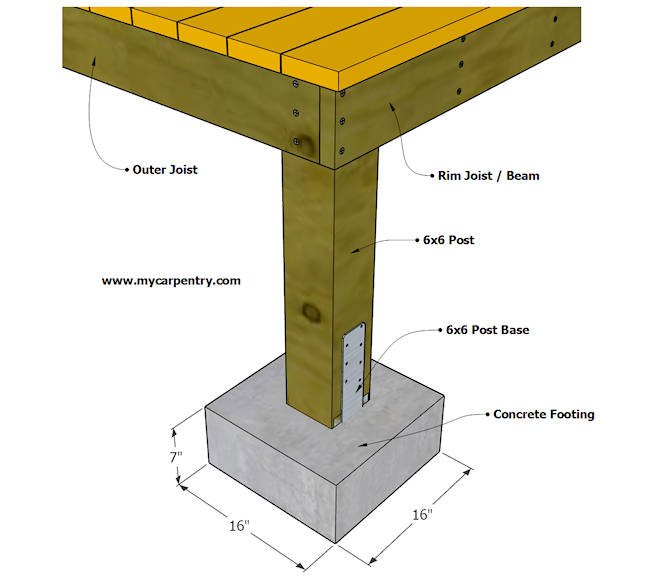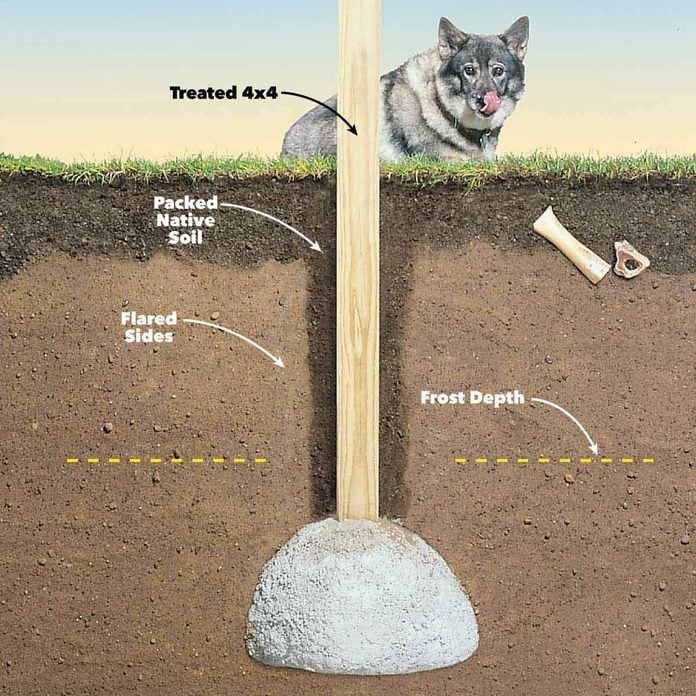Choosing the Right Deck Footings for Stability and Durability
The long life and safety of your deck depend greatly on the type of footings you choose, as they give the essential support and security to hold up against the test of time. In this conversation, we will explore the various types of deck grounds, take into consideration the essential variables to consider when making a decision, and delve right into the pros and cons of different options.
Types of Deck Grounds
These grounds are composed of a round hole filled with concrete, which gives a strong foundation for the deck blog posts. Concrete pier grounds are fairly easy to mount and offer excellent stability, making them a prominent selection for numerous deck projects.
An additional sort of footing is the helical pile ground. Helical heaps are steel shafts with helical plates affixed to them. These grounds are mounted by screwing them right into the ground, which develops a protected foundation for the deck. Helical stack footings are optimal for areas with tough dirt conditions, as they can be set up in almost any type of kind of soil. If needed., they additionally enable for easy modification and progressing of the deck.
Additionally, some builders choose precast concrete grounds. These footings are constructed from long lasting concrete and be available in various sizes and shapes to accommodate different deck layouts. Precast concrete footings are hassle-free to mount and supply a steady base for the deck framework.
Lastly, one more choice is the post-in-anchor ground system. This kind of ground involves driving a metal support right into the ground and affixing it to the deck blog post. It offers flexibility in regards to placing the deck blog posts and appropriates for decks with lightweight structures.
When picking the best kind of deck ground, it is necessary to take into consideration elements such as soil problems, deck tons, and regional building ordinance (Deck Footings). Consulting with an expert contractor or structural engineer can assist make certain the appropriate ground is selected for a risk-free and steady deck
Variables to Consider When Choosing Footings
When picking the ideal footings for a deck, it is crucial to meticulously consider various aspects such as soil problems, deck tons, and adherence to regional building ordinance. These variables play a significant role in guaranteeing the security and sturdiness of the deck structure.
One of the main variables to consider is the dirt conditions. The kind of dirt on which the deck will be constructed determines the kind of footings required. For example, decks improved sandy or loose soils might call for much deeper grounds to offer appropriate support and prevent settling. On the other hand, decks improved clay or extensive dirts might require grounds that can accommodate the soil's propensity to increase and agreement.
An additional vital variable is the deck tons. The weight of the deck, consisting of the materials utilized and any type of potential live tons such as furnishings or celebrations, should be taken right into account when selecting footings. The grounds should be created to bear the weight of the deck and distribute it uniformly to stop any kind of architectural concerns or failings.
Finally, adherence to local building regulations is vital. Building regulations differ from region to area, and it is important to abide by the specific requirements established by the neighborhood authorities. Deck Footings. These codes make certain that the deck is constructed safely and fulfills the necessary criteria for structural honesty and load-bearing ability
Concrete Footings: Disadvantages and pros

When used as the foundation for a deck,Concrete grounds provide several benefits and disadvantages. On the silver lining, concrete footings offer excellent stability and longevity. Concrete is a rigid and strong material that can support heavy lots and endure different climate condition. It also has a long life-span, making it a find trustworthy selection for long-term usage.
Another benefit of concrete grounds is their flexibility. They can be poured into various shapes and dimensions to fit different deck layouts and setups. Concrete grounds can be personalized to fit the particular needs and demands of the deck framework.
Nonetheless, there are likewise some downsides to using concrete grounds. One significant disadvantage is the cost and labor associated with their setup. Concrete footings require excavation and frequently require the assistance of heavy equipment. This can boost the overall expense of the deck project and may call for professional assistance.

Helical Piers Vs. Sonotubes: Which Is Much better?
In thinking about the foundation options for a deck, the contrast in between helical piers and sonotubes is important in figuring out the superior option. Helical piers, also referred to as screw heaps, are steel shafts with helical plates affixed to them. They are twisted right into the ground using hydraulic machinery, providing a steady and sturdy structure for the deck. On the other hand, sonotubes are round forms made of cardboard or fiber material that are loaded with concrete. They are put in a hole dug into the ground and give assistance for the deck.
When it comes to security and resilience, helical piers have the upper hand. The helical plates on the piers develop a strong hold with the soil, shifting or protecting against any type of motion of the deck. This is especially valuable in locations with unpredictable or changing soil problems. Sonotubes, on the various other hand, depend exclusively on the concrete loading for stability, which may not provide the same degree of stamina and resistance.
In terms of installment, helical piers are fairly much easier and faster to mount contrasted to sonotubes. The hydraulic equipment utilized to turn the piers into the ground makes sure a fast and efficient procedure. Sonotubes, on the other hand, call for excavating holes and pouring concrete, which can be labor-intensive and time-consuming.
Additionally, helical piers are a more flexible choice. They can be made use of in different dirt problems and can be adjusted or reinforced if needed. Sonotubes, on the various other hand, might need extra support, such as rebar, in specific dirt problems or locations with high lots needs.
Picking the Right Footings for Your Deck's Measurements
For optimum structural stability, it is necessary to very carefully select the ideal grounds that line up with the measurements of your deck. The dimensions of your deck, including its length, elevation, and width, play a substantial function in establishing browse this site the type and dimension of grounds needed.
When selecting grounds for your deck, it is very important to think about the load-bearing ability of the dirt. The weight of the deck, combined with the weight of any type of furnishings or individuals on it, applies a significant pressure on the grounds (Deck Footings). It is important to select grounds that can appropriately sustain this weight without sinking or changing over time.
Bigger decks with greater dimensions require bigger footings to offer sufficient security and assistance. The shape of the footings, whether they are round or square, depends on the layout and layout of the deck.
Conclusion
Finally, choosing the appropriate deck grounds is crucial for making sure stability and sturdiness. Aspects such as the kind of footings, the deck's measurements, and the benefits and drawbacks of different alternatives must be taken into consideration. Concrete grounds use strength and longevity, yet may be a lot more expensive and taxing to install. Helical piers and sonotubes have their very own advantages and disadvantages. Eventually, picking the proper grounds for your deck's certain demands is crucial for a resilient and successful framework.
These footings are composed of a cylindrical opening loaded with concrete, which offers a More Help strong structure for the deck posts. Concrete pier footings are relatively simple to install and supply outstanding security, making them a prominent selection for numerous deck jobs.
Precast concrete grounds are practical to set up and provide a stable base for the deck structure.
It uses versatility in terms of placing the deck messages and is appropriate for decks with light-weight frameworks.
Concrete grounds provide a number of advantages and negative aspects when utilized as the foundation for a deck.
Comments on “Deck Footings Unveiled: Recognizing the Trick Parts of a Dependable Deck Structure”